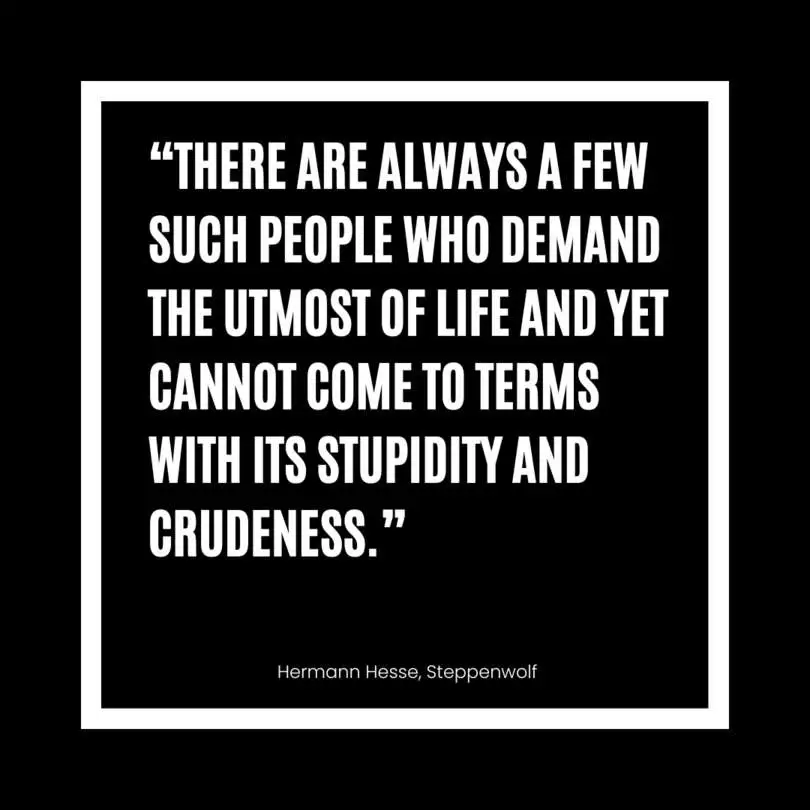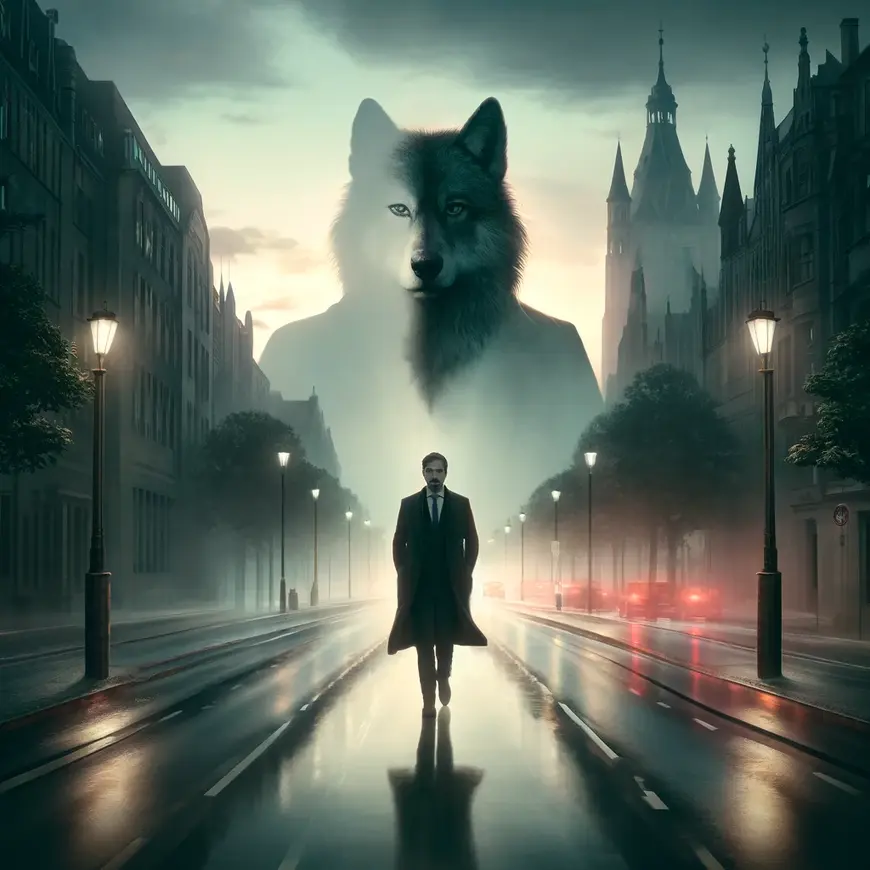A Journey into the Psyche: A Review of Hermann Hesse’s “Steppenwolf”
Hermann Hesse’s “Steppenwolf” is a thought-provoking and deeply introspective novel that takes readers on a psychological journey through the mind of its complex protagonist, Harry Haller. Published in 1927, this seminal work explores themes of identity, alienation, and the search for meaning in a world plagued by existential crisis. Through rich symbolism, vivid prose, and philosophical musings, Hesse delves into the inner turmoil and duality of human nature, leaving readers contemplating the intricacies of their own existence.
Plot Summary:
The novel centers around the life of Harry Haller, a middle-aged intellectual living in post-World War I Germany. Tormented by his internal conflicts, Haller feels estranged from society, considering himself a “Steppenwolf” – a lone wolf dwelling between the realms of human and animal nature. As the story unfolds, Haller befriends a mysterious man named Hermine, who introduces him to a world of pleasure, sensuality, and the beauty of the present moment. Through their encounters, Haller discovers a new perspective on life, challenging his nihilistic beliefs and forcing him to confront his inner demons.

Review: “Steppenwolf”
“Steppenwolf” is a literary masterpiece that defies easy categorization. It intertwines elements of magical realism, psychological exploration, and philosophical discourse, creating a narrative that both captivates and challenges readers. Hesse’s writing style is characterized by its lyrical prose, evoking a sense of melancholy and introspection that mirrors Haller’s state of mind. The narrative itself is structured as Haller’s diary, which lends an intimate and confessional quality to the storytelling.
One of the novel’s most remarkable achievements lies in its exploration of the human psyche. Hesse delves deep into Haller’s thoughts, fears, and desires, presenting a complex and multi-layered character study. Haller’s struggles with his dual nature, his yearning for transcendence, and his constant battle against inner conflicts resonate with readers on a profound level. Hesse skillfully depicts the universal struggle between the civilized self and the primal instincts that reside within each individual, reminding us of the fragility of our own identities.
At the heart of “Steppenwolf” lies a profound existential crisis. Haller’s isolation and disillusionment with society mirror the sentiments of many individuals in the aftermath of World War I. Hesse explores the repercussions of societal norms, expectations, and the existential void that arises from conforming to a rigidly defined identity. Through Haller’s experiences, readers are compelled to question their own place in the world, the masks they wear, and the boundaries that confine them.
Symbolism plays a significant role in the novel, heightening its allegorical nature. The figure of the Steppenwolf itself embodies a profound dichotomy. Haller sees himself as both a predator and a prey, oscillating between his desire for freedom and his fear of societal rejection. The Magic Theater, a fantastical place that Haller encounters, symbolizes a realm of self-discovery, where he confronts his darkest fears and is exposed to the different facets of his own being. Hesse’s vivid and imaginative descriptions create a surreal atmosphere that blurs the line between reality and illusion, emphasizing the dreamlike quality of Haller’s journey.

The introduction of Hermine as a pivotal character marks a turning point in the narrative. Hermine represents sensuality, spontaneity, and the pursuit of pleasure. Through her influence, Haller learns to embrace the present moment and shed the rigid intellectualism that had held him captive. Their relationship explores themes of sexuality, desire, and the transformative power of love. Hermine acts as a catalyst for Haller’s self-discovery, challenging his beliefs and helping him find a balance between the intellectual and the sensual aspects of his nature.
Hesse’s exploration of the dichotomy between the Apollonian and Dionysian forces within human nature is another compelling aspect of the novel. Haller’s internal struggle mirrors the eternal battle between reason and instinct, order and chaos. The novel invites readers to reflect on the delicate equilibrium between these opposing forces and the necessity of embracing both sides to achieve a harmonious existence.
Philosophical Musings
Furthermore, “Steppenwolf” delves into philosophical musings that add intellectual depth to the narrative. Hesse incorporates elements of Eastern philosophy, existentialism, and mysticism, weaving them seamlessly into the story. Through discussions of Nietzschean philosophy, Eastern spirituality, and the search for enlightenment, the novel raises profound questions about the nature of reality, the meaning of life, and the pursuit of personal transformation.
It is worth noting that “Steppenwolf” can be a challenging read for some due to its dense philosophical discourse and introspective nature. The narrative can occasionally veer into introspective soliloquies that may be overwhelming for readers seeking a straightforward plot. However, those willing to immerse themselves in the rich tapestry of Hesse’s ideas will find a rewarding and thought-provoking experience.
Famous Quotes from “Steppenwolf” by Hermann Hesse
- “The bird fights its way out of the egg. The egg is the world. Who would be born must destroy a world.”
- “There are always a few such people who demand the utmost of life and yet cannot come to terms with its stupidity and crudeness.”
- “A man cannot live intensely except at the cost of the self.”
- “Most men will not swim before they are able to. Is not that witty? Naturally, they won’t swim! They are born for the solid earth, not for the water. And of course, they won’t think of swimming until they feel they are sinking!”
- “Human life is reduced to real suffering, to hell, only when two ages, two cultures and religions overlap.”
- “I had the taste of blood and chocolate in my mouth, the one as hateful as the other.”
- “One never reaches home,’ she said. ‘But where paths that have an affinity for each other intersect, the whole world looks like home, for a time.”

Trivia Facts from “Steppenwolf”
- Semi-autobiographical Elements: Hermann Hesse infused “Steppenwolf” with elements from his own life and struggles, particularly his personal crises, his quest for self-understanding, and his exploration of the spiritual and the mundane. The novel is considered semi-autobiographical, reflecting Hesse’s own journey through the turmoil of the soul.
- The Magic Theater: One of the most famous aspects of “Steppenwolf” is the Magic Theater, a place where the protagonist, Harry Haller, experiences a series of surreal and symbolic adventures. The Magic Theater serves as a metaphor for the exploration of the self and the multiplicity of one’s personality. It was inspired by Hesse’s interest in psychoanalysis and the exploration of the unconscious.
- Critical Reception: Upon its publication, “Steppenwolf” was met with mixed reviews. Some readers and critics found it difficult to understand, while others criticized it for its perceived nihilism. However, it gradually gained recognition as a masterpiece of modern literature, particularly among young readers in the 1960s who identified with its themes of rebellion, self-exploration, and the critique of societal norms.
- Influence on Pop Culture: The novel has had a significant impact on popular culture. For instance, the rock band Steppenwolf, famous for their hit song “Born to Be Wild,” took their name from Hesse’s novel, reflecting the book’s themes of freedom and rebellion against conformity.
- Nobel Prize for Literature: While “Steppenwolf” itself did not win a Nobel Prize, Hermann Hesse was awarded the Nobel Prize in Literature in 1946. The Swedish Academy recognized his entire body of work, including “Steppenwolf,” for its contribution to literature, citing his inspired poetic style that, in its quest for truth, blends the world of thought with the world of feeling.
- Translations and Interpretations: “Steppenwolf” has been translated into numerous languages and has been the subject of various interpretations. It has been analyzed from psychological, existential, and literary perspectives, demonstrating the novel’s complexity and depth.
- Censorship and Controversy: Like many groundbreaking works of literature, “Steppenwolf” faced its share of censorship and controversy, particularly for its explicit themes, critique of bourgeois society, and exploration of psychoanalytic concepts. Despite this, or perhaps because of it, the novel has endured as a seminal work that continues to challenge and inspire readers.
Conclusion: Steppenwolf
Hermann Hesse’s “Steppenwolf” is a literary masterpiece that continues to resonate with readers across generations. Through its exploration of the human psyche, existential dilemmas, and the search for identity, the novel invites readers to embark on a profound introspective journey. Hesse’s poetic prose, rich symbolism, and philosophical musings create an immersive narrative that challenges conventional notions of selfhood and the meaning of life. “Steppenwolf” remains a timeless work that reminds us of the eternal struggle between our primal instincts and the quest for self-realization.